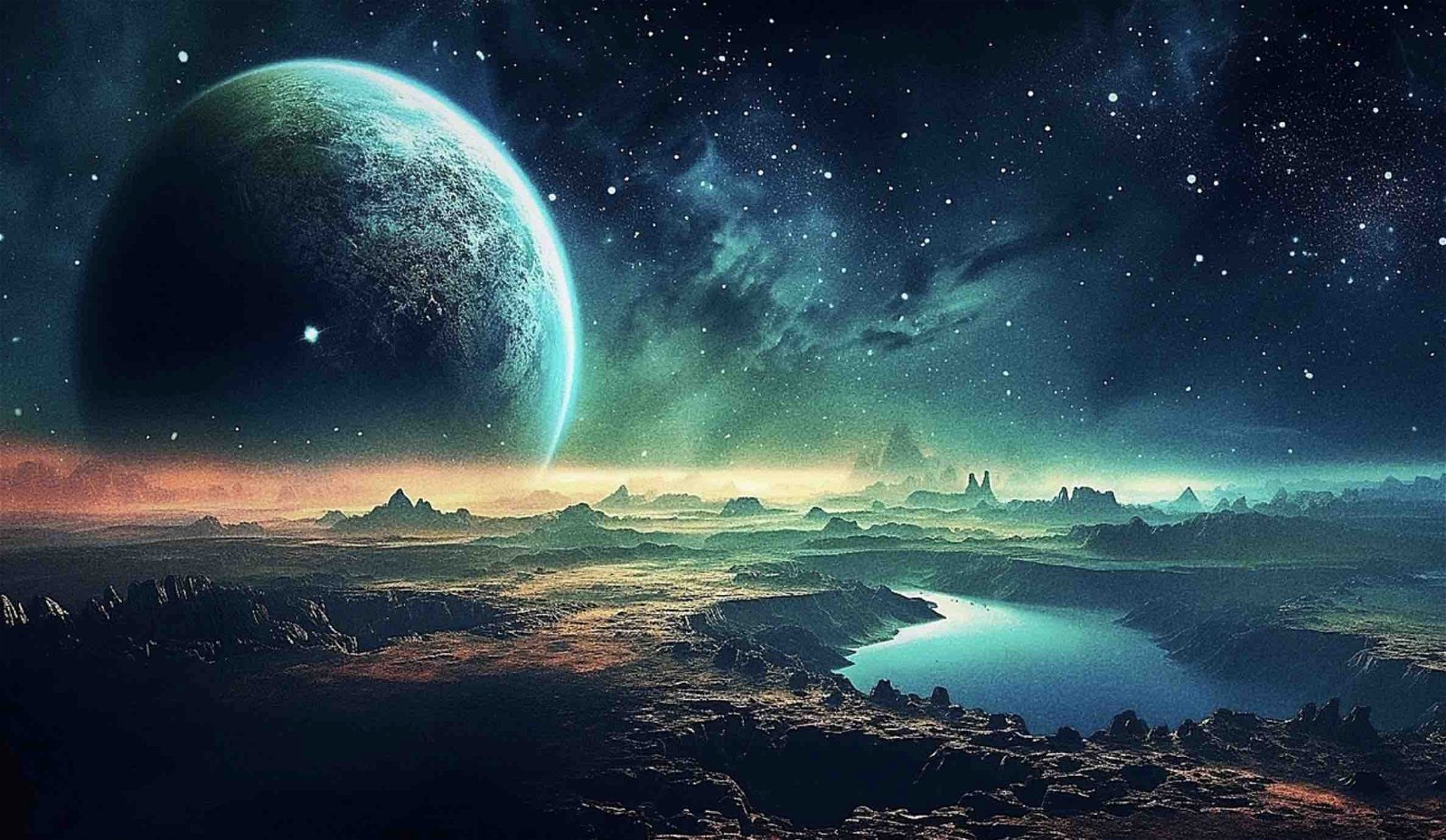A major technological breakthrough in sensing signs of life that researchers are hailing as the “holy grail of astrobiology” is providing new hope that the search for life on other planets may bear fruit sooner than once thought.
In the last few decades, technologies that include new telescopes, satellites, and rovers have found tantalizing signs of the building blocks of life on other planets and moons, both inside and outside of our solar system. Yet none have been able to say definitively whether extraterrestrial life has ever existed, or if there are locations where it may even exist today.
Now, a new system could change that dynamic, leading to the first undeniable detection of life on another planet in the very near future.
The Search for Life on Other Planets Has Found Clues but No Definitive Proof
In Star Trek, determining whether or not there are signs of life on another planet simply involves engaging the life signs detector and waiting for the results. In the real world, scientists and astrobiologists don’t have the Starship Enterprise, much less a handy handheld tricorder, to do the job, so they rely on searching for more general “clues” to life to infer its existence.
For example, researchers studying Venus, Earth’s closest planetary neighbor, have found the chemical signature for phosphine in a region of the planet’s atmosphere that might be hospitable for certain types of microscopic lifeforms found on Earth. However, phosphine could also be present due to natural processes, so saying with a high degree of certainty that there is life in the clouds of Venus simply because there is phosphine is not possible.
A similar situation exists on Mars, where orbiters and rovers have found signs of ancient bodies of water along with many of the chemical components of Earth-based lifeforms, leading many to postulate that life may have once existed on the red planet. Still, like the phosphine on Venus, these clues don’t necessarily mean that life is actually there.
More recently, scientists using the James Webb Space Telescope found the chemical signatures for dimethyl sulfide (DMS) in the atmosphere of a distant exoplanet named K2-18B. On Earth, DMS is only made by biological processes, so there is a lot of excitement that its presence on another planet could mean there is life there. Of course, this is still speculation, as researchers don’t know enough about the exact chemical processes on that planet to rule out an abiotic origin.
Now, according to researchers from the Carnegie Science Earth and Planets Laboratory, they have developed a potentially world-changing new tool that is able to look beyond these hints of biological processes by using a sample’s actual physical structure to determine with 90% certainty whether it is biotic or abiotic in nature. If mounted on a satellite or a rover, such a tool could dramatically change the way astrobiologists search for signs of life on other planets by offering them a tool they have previously only existed in science fiction, an honest-to-goodness life signs detector.
AI Life Signs Detector Boasts 90% Accuracy Even on Ancient Samples
Published in the Proceedings of the National Academy of Sciences, the new method involves using artificial intelligence to analyze the structure of samples at the atomic level. Specifically, the researchers say they have demonstrated that “AI can differentiate biotic from abiotic samples by detecting subtle differences within a sample’s molecular patterns.”
To make such a determination, the selected sample first undergoes a “pyrolysis gas chromatography analysis.” That process breaks the sample up into its component parts and identifies them individually. Then, a mass spectrometer is used to determine the molecular weights of the identified components.
This data was then fed into an AI that has been trained on “multidimensional data” from 134 known abiotic or biotic carbon-rich samples to set a baseline on what is and isn’t biological in nature. This means this particular AI tool has been trained to look at the specific structural makeup and composition of a sample to determine if it is (or was) alive or if it is simply a naturally occurring abiotic rock.
To explain how the AI does this analysis, co-author Anirudh Prabhu of the Carnegie Institution for Science used the concept of separating different coins into groups by things like monetary value, metal, year, weight, or radius, then taking it a step further to find combinations of these and other attributes that separate them even further.
“And when hundreds of such attributes are involved, AI algorithms are invaluable to collate the information and create highly nuanced insights,” said Prabhu.
According to the press release announcing the new life detection method, this system successfully identified a wide range of biotic and abiotic samples with 90% accuracy. This included “living” things, such as modern shells, teeth, bones, insects, leaves, rice, human hair, and cells preserved in fine-grained rock, remnants of ancient life altered by geological processing (e.g., coal, oil, amber, and carbon-rich fossils), as well as samples with abiotic origins, such as pure laboratory chemicals (e.g., amino acids) and carbon-rich meteorites.
“We began with the idea that the chemistry of life differs fundamentally from that of the inanimate world; that there are ‘chemical rules of life’ that influence the diversity and distribution of biomolecules,” explained the study’s co-author, Dr. Robert Hazen. “If we could deduce those rules, we can use them to guide our efforts to model life’s origins or to detect subtle signs of life on other worlds.”
Hazen notes that one unexpected surprise came from the AI’s ability to not only determine if something was biotic or abiotic, which is all they asked it to do, but also its ability to separate out whether biotic samples were alive or ancient fossils, something the AI did all on its own.
“What really astonished us was that we trained our machine-learning model to predict only two sample types – biotic or abiotic – but the method discovered three distinct populations: abiotic, living biotic, and fossil biotic,” he explained. “In other words, it could tell more recent biological samples from fossil samples – a newly plucked leaf or vegetable, say, versus something that died long ago.”
Significantly, the researchers say their tool was able to successfully samples that were recent as well as some that were 400-500 million years old.
Method Likely to Unlock Mystery of Life on Other Planets, Even If It Is Dramatically Different From Earth Life
While the researchers behind the new method point out that their process should help identify the nature of Earth-based samples that have proven difficult to characterize, like the 3.5 million-year-old black sediments in Western Australia that some believe contain the earliest signs of life on Earth, the most tantalizing use for this new approach would be using it to identify the first (nearly) undeniable signs of life on another planet.
“This routine analytical method has the potential to revolutionize the search for extraterrestrial life and deepen our understanding of both the origin and chemistry of the earliest life on Earth,” says Dr. Hazen. “It opens the way to using smart sensors on robotic spacecraft, landers, and rovers to search for signs of life before the samples return to Earth.”
The Study’s lead author Jim Cleaves agrees, calling the search for extraterrestrial life “one of the most tantalizing endeavors in modern science” while also noting how their approach could be the critical tool astrobiologists have been missing from their life-hunting toolbox.
“The implications of this new research are many, but there are three big takeaways,” said Cleaves.
“First, at some deep level, biochemistry differs from abiotic organic chemistry; second, we can look at Mars and ancient Earth samples to tell if they were once alive; and third, it is likely this new method could distinguish alternative biospheres from those of Earth, with significant implications for future astrobiology missions.”
Significantly, Dr. Hazen believes their approach will not only identify life on other planets that are similar to life on Earth. Instead, he believes the very nature of what it means to be biotic or abiotic is likely universal, so using their method should even be able to find life on other planets that is extraordinarily different from life on Earth.
“These results mean that we may be able to find a lifeform from another planet, another biosphere, even if it is very different from the life we know on Earth,” he said. “And, if we do find signs of life elsewhere, we can tell if life on Earth and other planets derived from a common or different origin.”
“Put another way, the method should be able to detect alien biochemistries, as well as Earth life,” Hazen added. “That is a big deal because it’s relatively easy to spot the molecular biomarkers of Earth life, but we cannot assume that alien life will use DNA, amino acids, etc. Our method looks for patterns in molecular distributions that arise from life’s demand for ‘functional’ molecules.”
Christopher Plain is a Science Fiction and Fantasy novelist and Head Science Writer at The Debrief. Follow and connect with him on X, learn about his books at plainfiction.com, or email him directly at christopher@thedebrief.org.

